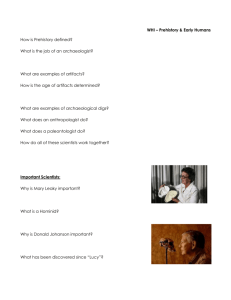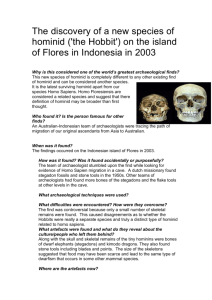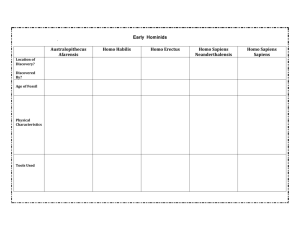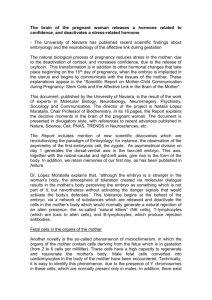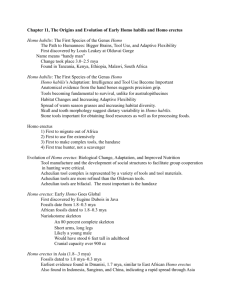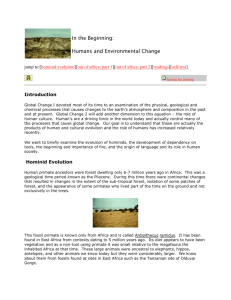Chapter 34 * Vertebrates
advertisement
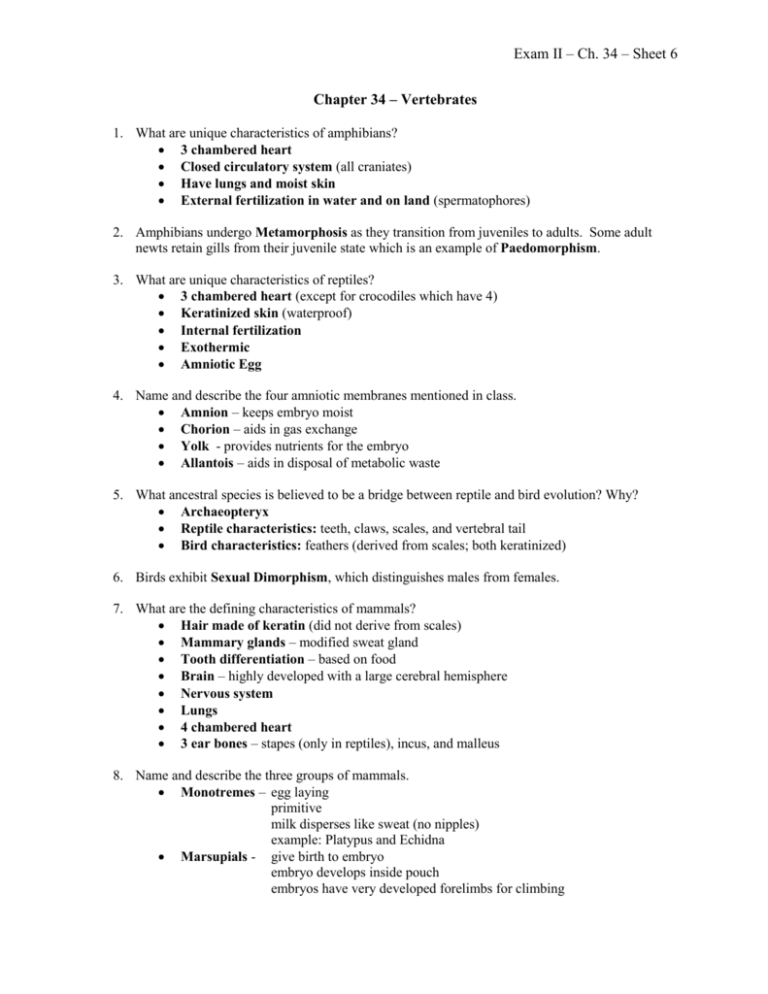
Exam II – Ch. 34 – Sheet 6 Chapter 34 – Vertebrates 1. What are unique characteristics of amphibians? 3 chambered heart Closed circulatory system (all craniates) Have lungs and moist skin External fertilization in water and on land (spermatophores) 2. Amphibians undergo Metamorphosis as they transition from juveniles to adults. Some adult newts retain gills from their juvenile state which is an example of Paedomorphism. 3. What are unique characteristics of reptiles? 3 chambered heart (except for crocodiles which have 4) Keratinized skin (waterproof) Internal fertilization Exothermic Amniotic Egg 4. Name and describe the four amniotic membranes mentioned in class. Amnion – keeps embryo moist Chorion – aids in gas exchange Yolk - provides nutrients for the embryo Allantois – aids in disposal of metabolic waste 5. What ancestral species is believed to be a bridge between reptile and bird evolution? Why? Archaeopteryx Reptile characteristics: teeth, claws, scales, and vertebral tail Bird characteristics: feathers (derived from scales; both keratinized) 6. Birds exhibit Sexual Dimorphism, which distinguishes males from females. 7. What are the defining characteristics of mammals? Hair made of keratin (did not derive from scales) Mammary glands – modified sweat gland Tooth differentiation – based on food Brain – highly developed with a large cerebral hemisphere Nervous system Lungs 4 chambered heart 3 ear bones – stapes (only in reptiles), incus, and malleus 8. Name and describe the three groups of mammals. Monotremes – egg laying primitive milk disperses like sweat (no nipples) example: Platypus and Echidna Marsupials - give birth to embryo embryo develops inside pouch embryos have very developed forelimbs for climbing Exam II – Ch. 34 – Sheet 6 Placentals - nourishes embryo via placenta advanced mammals (group with greatest number of species) 9. Many marsupials resemble placental animals in similar ecological roles in other parts of the world, which is an example of Convergent Evolution. 10. If you were given a description of a monkey, what characteristics would help you distinguish if it was an old world or new world monkey? New World – long slender arms prehensile tail (able to grasp) live predominantly in trees nostrils open to the side Old World - lack prehensile tail colored buttocks tough seat pads nostrils open downward 11. What is the difference between a Hominoid and a Hominid? Hominoid – describes humans, ancestral species, and great apes Hominid – describes only humans and ancestors 12. Describe these early human. Australopithecus – Afarensis “Lucy” walked upright 450 cc brain Homo habilis – “handy man” made tools 660-750 cc brain Homo erectus first to leave Africa controlled fire 1100 cc brain Homo neaderthalensis – not related to humans larger than humans lived in cold climates Homo sapiens evolved from Homo erectus in Africa, NOT in various places 13. Which gene is responsible for our ability to speak? Fox P-2 gene




